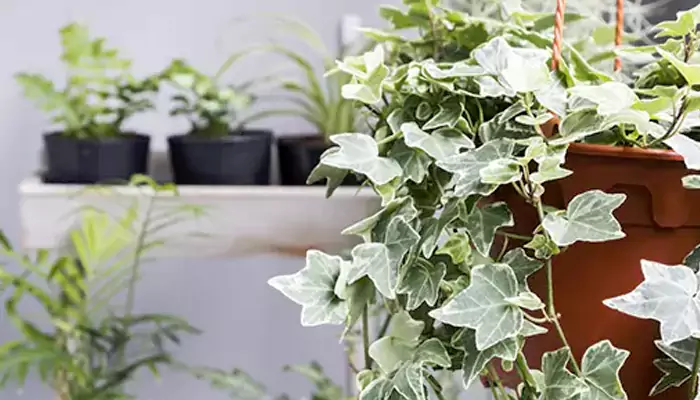Tranquil Oasis: 5 Indoor Vine Plants for Greener Homes
String of greenery indoors for ultimate cool vibes
- Sanjukta
- 18 August, 2024
- 2 mins ago

Tranquil Oasis: 5 Indoor Vine Plants for Greener Homes
String of greenery indoors for ultimate cool vibes
Indoor vine plants have become increasingly popular for several compelling reasons. Beyond their undeniable aesthetic appeal, these green wonders offer a plethora of benefits that make them a delightful addition to any indoor space. Whether you're adorning a cozy apartment, a bustling office, or a serene living room, vine plants bring a touch of nature indoors, transforming any environment into a tranquil oasis. Let's explore the myriad reasons why keeping vine plants indoors is a choice worth embracing.
Benefits of indoor vine plants
First and foremost, indoor vine plants serve as natural air purifiers, enhancing the quality of the air we breathe by removing harmful toxins and pollutants. Through the process of photosynthesis, these plants absorb carbon dioxide and release oxygen, promoting a healthier indoor environment. Additionally, their lush foliage can help increase humidity levels, particularly beneficial during dry winter months or in air-conditioned spaces.
Furthermore, the aesthetic allure of indoor vine plants cannot be overstated. Their gracefully cascading tendrils and verdant leaves add a refreshing burst of greenery to any room, instantly revitalizing the ambiance and infusing it with a sense of vitality. Whether adorning shelves, trailing down from hanging baskets, or climbing trellises, vine plants imbue spaces with a natural charm and whimsical beauty.
Pothos
Pothos is the ultimate easy-care vine plant, perfect for beginners or anyone who wants a fuss-free green companion. It's fast-growing, so you'll have vines trailing down stair railings or cascading from hanging baskets in no time. Use pothos when you want instant gratification and a lush, vining look. Plus, it can handle low light conditions like a champ, making it a go-to choice for homes with limited natural light. Just guide its stems over and around objects like picture frames or stair railings, and watch it grow leafy, sturdy vines up to 10 feet long indoors.
English Ivy
If you're more into the cozy vibes of a cottage garden than the lushness of a tropical jungle, English Ivy might be your jam. It brings a timeless elegance to any space and pairs beautifully with brass accents. While it can be a bit finicky, English Ivy's clean shape and classic appearance make it worth the effort. You can even jazz things up with variegated varieties, adding splashes of color beyond just green. Train it to climb a small trellis or topiary for an extra touch of sophistication. Opt for small-leafed, slow-growing types to keep it manageable in a pot, and make sure it gets plenty of bright light.

String of Hearts
String of Hearts is a delicate and charming vine with thin purple stems and tiny, heart-shaped leaves in a range of colors from variegated green and white to cream and pink. It's a real showstopper when it produces its deep magenta flowers, which happen once a year. This plant is a breeze to care for—just give it up to six hours of bright, indirect light a day, and water it once a month. Its vines can reach up to 10 to 12 feet in the right conditions, making it perfect for trailing out of a pot or training up a trellis.
Devil's Ivy
With its heart-shaped leaves adorned in various shades of green and creamy variegations, Devil's Ivy, also known as Pothos, is a quintessential choice for indoor greenery. This resilient plant thrives in low-light conditions, making it ideal for spaces with limited sunlight. Its vining nature allows it to cascade gracefully from shelves or trail elegantly from hanging planters. Devil's Ivy requires minimal maintenance, only needing occasional watering when the soil feels dry to the touch.

Hoya
Hoya, also known as wax plant, is a fast-growing tropical vine with thick, waxy leaves that make it easy to care for. It's a low-maintenance plant that thrives indoors, especially in hanging baskets where you can let its vines dangle freely. Give it six hours of bright indirect light a day, and be careful not to overwater it. While it doesn't bloom often, when it does, its flowers emit a sweet scent that's sure to delight.










